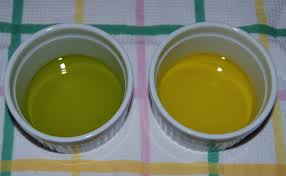By: Heidi Harris, University of Saint Joseph, Dietetic Intern ‘17
Pastas, soufflés, mayonnaise, cookies, cakes, pudding… and the list goes on and on! What do all of these delicious foods have in common? That’s right, you guessed it!
Eggs.

Eggs are a great staple food! They are found in most baked goods and prepared meals and are an excellent source of protein! In fact, despite what many fad diets claim, eggs can be healthy for all ages! They contain all nine of the essential amino acids our bodies need for proper health and nutrition and one large egg typically packs six grams of protein. Plus, they are a decent calorie source, offering about 70 calories per one large egg. And! They are rich in fat-soluble compounds that can have healthy benefits on nutritionally “at-risk” populations, such as the elderly, pregnant woman, and children.1
So, you might be thinking, if eggs are so good for you, why do they get such a bad rap?
The answer may seem simple, but the truth is a little more complex. So, bare with me as I dive into today’s foodie myth: Eggs Are Evil!

Over the past 40 years, eggs have gotten a bad rap because of their saturated fat content. There are about three grams of saturated fat per 100 grams of egg and 210 milligrams of cholesterol per one large egg yolk.2 The public has been warned by health professionals, the media and more, against the frequent consumption of eggs. The idea was that consuming eggs and their high saturated fat and cholesterol content would lead to increased levels of cholesterol and would increase the risk of developing cardiovascular disease, especially for individuals with diabetes.3
But, egg lovers rejoice! New research suggests that dietary cholesterol and the cholesterol in eggs have limited effects on the blood cholesterol level and on the risk for developing cardiovascular disease.4

In fact, the type of dietary cholesterol found in eggs actually has heart healthy characteristics! I know, most people run and hide whenever ‘cholesterol’ enters the conversation, but the research shows that the consumption of eggs can cause the body to produce good cholesterol, or HDL cholesterol, which can transport the bad cholesterol, or LDL cholesterol, to the liver for bile production and eventually be excreted from the body!5
Now you might be asking yourself: Well, if eggs really aren’t that bad, then why do people still warn us against eating them?
I’m going to be honest with you, there have been some studies that support a correlation between increased blood cholesterol and egg consumption. For example, one study supported that eating four eggs in one week led to a six-percent increase in the risk of developing coronary artery disease and a 29% increase in the risk of developing diabetes.2 But in 2013, this argument against eggs was rebutted as another source found that there was no significant relation of egg consumption and cardiovascular disease, coronary artery disease or diabetes. Instead, the source drew the conclusion that there was an increased risk for these diseases because of the foods that are closely accompanied with eggs, such as bacon, sausage, ham, and the fatty oils and butters used to cook eggs.6
So, with that being said, how many eggs should the average American be eating?

Good question!
Currently, the Dietary Guidelines recommends Americans to limit dietary cholesterol intake to 300 mg per day.7 But, as more scientific literature is published and supports that there is a lack of correlation between egg intake and cardiovascular disease, it indicates that healthy people are able to eat at least one egg per day.6
What exactly does that mean for you?
Well, before cutting back on those eggs all-together, I’d suggest taking a moment and reflecting on your daily dietary cholesterol intake. If you are following a low cholesterol diet for medical reasons and try not to consume over 300 mg of cholesterol per day, maybe having an egg everyday might not be the best option for you. But, if you’ve got some wiggle room and want to add a little extra protein, get some healthy cholesterol into your diet, and absorb as many healthy fat-soluble compounds into your system as possible, I’d suggest cracking open that egg and cooking them up your favorite way!8 (May I suggest hard-boiling them? Let the pot come to a complete boil, add a teaspoon of baking soda to make that shell slide right off, and boil for 10 minutes – delicious!)
After all, no one knows you better than you!

Check Out Where I Got My Facts!
- Miranda J, Anton X, Redondo-Valbuena C, et al. Egg and Egg-Derived Foods: Effects on Human Health and Use as Functional Foods. Nutrients. 2015;7(1):706-729. doi:10.3390/nu7010706.
- Spence JD, Jenkins DJ, Davignon J. Dietary cholesterol and egg yolks: Not for patients at risk of vascular disease. Canadian Journal of Cardiology. 2010;26(9). doi:10.1016/s0828-282x(10)70456-6.
- Djousse L, Gaziano JM. Egg Consumption and Risk of Heart Failure in the Physicians’ Health Study. Circulation. 2008;117(4):512-516. doi:10.1161/circulationaha.107.734210.
- Fuller N, Sainsbury A, Caterson I, Markovic T. Egg Consumption and Human Cardio-Metabolic Health in People with and without Diabetes. Nutrients. 2015;7(9):7399-7420. doi:10.3390/nu7095344.
- Beynen AC, Katan MB. Effect of egg yolk feeding on the concentration and composition of serum lipoproteins in man. Atherosclerosis. 1985;54(2):157-166. doi:10.1016/0021-9150(85)90175-3.
- Rong Y, Chen L, Zhu T, et al. Egg consumption and risk of coronary heart disease and stroke: dose-response meta-analysis of prospective cohort studies. Nutrients. 2013;346(jan07 2). doi:10.1136/bmj.e8539.
- Burke JD. Dietary Guidelines for Americans. Nutrition Today. 2015;50(4):174-176. doi:10.1097/nt.0000000000000104.
- Kritchevsky SB. A Review of Scientific Research and Recommendations Regarding Eggs. Journal of the American College of Nutrition. 2004;23(sup6). doi:10.1080/07315724.2004.10719429.
Read Full Post »



 how appetizing a meal looks. Especially if the preparation of pureed foods does not involve molds or piping, you may just be using a scoop to put foods on the plate. In which case, make sure foods are not piled one on top of the other and are neatly scooped on to the plate
how appetizing a meal looks. Especially if the preparation of pureed foods does not involve molds or piping, you may just be using a scoop to put foods on the plate. In which case, make sure foods are not piled one on top of the other and are neatly scooped on to the plate Piping can be used as well to add unique characteristics to pureed foods that would be found in certain foods naturally, such as the stems on carrots. Piping is as simple as adding the pureed mixture into a plastic piping bag and adding the appropriately shaped tip to create a beautiful plate!
Piping can be used as well to add unique characteristics to pureed foods that would be found in certain foods naturally, such as the stems on carrots. Piping is as simple as adding the pureed mixture into a plastic piping bag and adding the appropriately shaped tip to create a beautiful plate!






 identifying which oils are “extra virgin” has proven itself a greater challenge than one would think. Look for olive oils that clearly advertise themselves as, “extra virgin,” or “premium extra virgin,” only. Like each type of olive oil, these oils begin by manufacturers juicing up to 90% of olive oils natural juices. However, with extra virgin olive oil, high heat and chemicals are not allowed and beyond some moderate heat, the oil is neither further processed nor refined.
identifying which oils are “extra virgin” has proven itself a greater challenge than one would think. Look for olive oils that clearly advertise themselves as, “extra virgin,” or “premium extra virgin,” only. Like each type of olive oil, these oils begin by manufacturers juicing up to 90% of olive oils natural juices. However, with extra virgin olive oil, high heat and chemicals are not allowed and beyond some moderate heat, the oil is neither further processed nor refined. give an entirely new class of olive oil nearly the identical name? These oils sit behind words like, “fine virgin,” or simply “virgin” olive oils. They either have acidity higher than 0.8% or have been refined/processed in some way. They may also be filtered and heated at a high temperature during manufacturing. They must also have 2% or less acidity.
give an entirely new class of olive oil nearly the identical name? These oils sit behind words like, “fine virgin,” or simply “virgin” olive oils. They either have acidity higher than 0.8% or have been refined/processed in some way. They may also be filtered and heated at a high temperature during manufacturing. They must also have 2% or less acidity.



























